Hamlet, William, the Younger (McKechnie Section 2)
See Section Three for main entry.
We are concerned in this Section with the work, which Hamlet painted either in black or in dark base colours.
The examples which most resemble the work of his eider namesake are the silhouettes of Mr. and Mrs. Samuel Hibbert; these show coarser brush-work, and some use of gum arabic (mixed with the black water-colour pigment) to show fines of detail in clothing and hair. Common to both artists is the device of using Chinese white to show the fines of hair against the dark face. Bust-line terminations, on the few examples, which may be positively identified as being by this artist, are variable in shape, whereas those on the eider Hamlet's work are more consistent in shape, usually showing an alternatively concave and convex curve. The profile of William Lloyd is 128 painted against a base colour of dark-bluish grey; the hair is reasonably well painted in an umber shade. On this example, gum Arabic is used, even more conspicuously than usual, to show the demarcation fines of clothing.
Hamlet's full-length work is variable in quality; on the earlier examples hands and feet are clumsily painted and rather over-size. The illustrated example (probably concocted from an earlier glass profile by the eider Hamlet) shows these characteristics. Hamlet's later profile work in colour (see Section Six) shows a great improvement, possibly accounted for by the lessons, which Hamlet received from John Dixon (q.v.), the miniaturist and silhouette artist.
The identification of Hamlet's work painted on card is not made easier by the fact that some examples bear trade labels used by the eider Hamlet.
Ills. 128, 823-825, 994, 1000
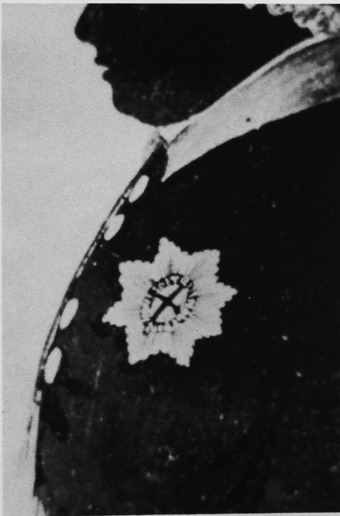
The Star of the Order of the Garter. Detail from a silhouette of George III by William Hamlet the younger. The Hamlets usually rendered the words ‘Honi soit qui mal y pense’ with more precision than did Charles Rosenberg. (823)
From the collection of the late J. C. Woodiwiss
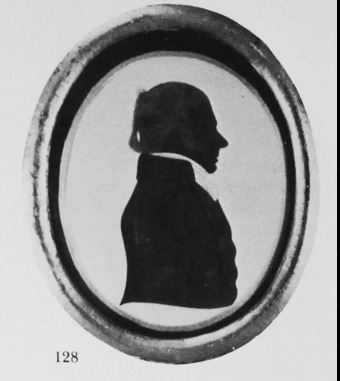
William Llyod
Silhouette by William Hamlet the younger. Perhaps c. 1808; the subject died in 1810.
costume dating points
The Ramillies plait, turned up and pinned to itself, was an old fashion from the 1780s; but the whiskers, in military style, were very advanced for the time.
The frilled shirt, and what appears to be a pre-1785 stock.
The 1790s-style double-breasted waistcoat, with a low turn-down invisible collar.
The double-breasted tail-coat, typical of the period 1800-1810.
Section two
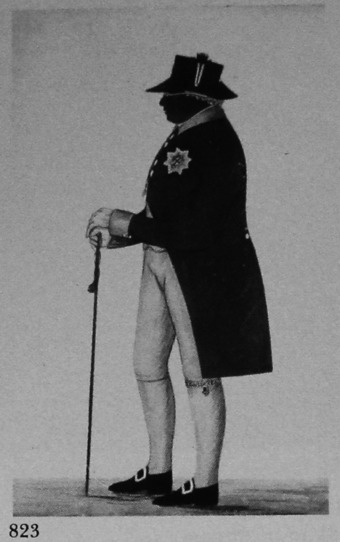
George III
Silhouette painted on card
Probably c. 1807-1808
Trade Label No. 1e of William Hamlet the elder.
From the collection of the late J. C. Woodiwiss
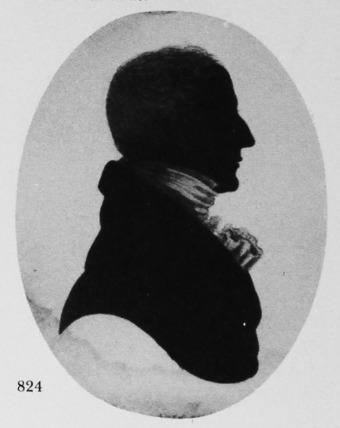
Samuel Hibbert
Silhouette painted on card
1815
2 7/8 x 2 3/8 in./74 x 61mm.
Trade Label No. 2
Frame: papier mâché
From Dyrham Park, by permission of the National Trust
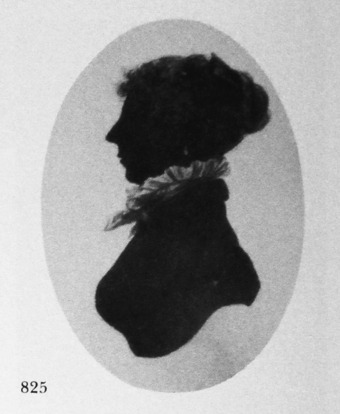
Abigail Hibbert
Silhouette painted on card
1815
2 7/8 x 2 3/8 in./74 x 61mm.
Trade Label No. 2
Frame: papier mâché
From Dyrham Park, by permission of the National Trust
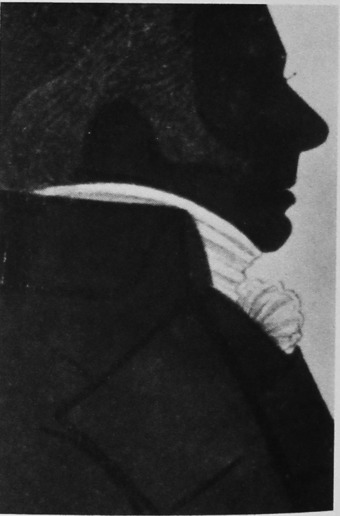
Man’s shirt-frill. Detail from a silhouette by William Hamlet the younger.
